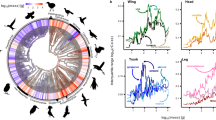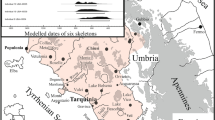Abstract
Dictyocotyle coeliaca Nybelin, 1941, the only nionogenetic trematode ever to be found in the cœlom of a vertebrate, was described from two specimens, one from Raia lintea near Skagen and the other from R. radiata at Trondheim. Ten years ago one of us described two other specimens from R. clavata and expressed the hope that a look-out would be kept for the trematode in zoological laboratories1. This appeal brought nine specimens from J. E. N. Sloan, formerly of the Zoology Department, University of Edinburgh, and it seems to have led to the publication of two original papers. In neither paper was the total number of parasites specified, but 16 out of 55 Raia naevus and 31 out of 73 R. radiata taken on Scottish fishing grounds2 and 35 out of 135 R. naevus landed at Plymouth3 were infected. Mean numbers of parasites per fish were 7 and 4 respectively, and in each instance rays of other species did not yield any parasites. This trematode closely resembles the common cloacal parasite Calicotyle kroyeri, differing chiefly in the nature of the posterior adhesive organ (opisthaptor), which is a delicate hookless disk showing faint markings or irregular shapes and sizes. These simulate but are not suctorial compartments, or loculi, such as are found in Calicotyle and other Monocotylidae, and mainly for this reason the taxonomic status of Dictyocotyle remains undetermined. Llewellyn and Green3 believe it “distinctly possible” that the host landed at Brixham “had been mis-identified”. When at the time confirmation was sought, Dr. E. B. Francis was emphatic, stating, “the species of Raia (as mentioned in my previous letter !) was ‘clavata’, source Brixham” (letter dated March 26, 1947).
This is a preview of subscription content, access via your institution
Access options
Subscribe to this journal
Receive 51 print issues and online access
$199.00 per year
only $3.90 per issue
Buy this article
- Purchase on Springer Link
- Instant access to full article PDF
Prices may be subject to local taxes which are calculated during checkout
Similar content being viewed by others
References
Dawes, B., Nature, 161, 642 (1948).
Hunter, G. C., and Kille, R. A., J. Helminth., 24, 15 (1950).
Llewellyn, J., and Green, J., J. Mar. Biol. Assoc. U.K., 36, 77 (1957).
Brinkmann, A., Univ. Bergen Arb. naturv. R., No. 1 (1952).
Author information
Authors and Affiliations
Rights and permissions
About this article
Cite this article
DAWES, B., GRIFFITHS, I. The Enigmatical Trematode “Dictyocotyle coeliaca”. Nature 182, 1033–1034 (1958). https://doi.org/10.1038/1821033a0
Issue Date:
DOI: https://doi.org/10.1038/1821033a0
This article is cited by
-
Surface ultrastructural characteristics of Dictyocotyle coeliaca Nybelin, 1941 (Monopisthocotylea: Monocotylidae), an endoparasitic monogenean of rays
Parasitology Research (2016)
-
A Redescription of Calicotyle australis Johnston, 1934 (Monogenea: Monocotylidae) from the Type-host Trygonorrhina Fasciata (Rhinobatidae) off Adelaide, South Australia, Including Descriptions of Live and Silver Stained Larvae
Systematic Parasitology (2006)
-
A phylogenetic analysis and revised classification of the Monocotylidae Taschenberg, 1879 (Monogenea)
Systematic Parasitology (1995)
-
Calicotyle australiensis n. sp. and Calicotyle sp. (Monogenea, Monopisthocotylea) from the rectum and rectal glands, and Rugogaster hydrolagi Schell, 1973 (Trematoda, Aspidogastrea) from the rectal glands of holocephalans off the coast of southeastern Australia
Systematic Parasitology (1992)
-
Relationship between Dictyocotyle and Calicotyle
Nature (1959)
Comments
By submitting a comment you agree to abide by our Terms and Community Guidelines. If you find something abusive or that does not comply with our terms or guidelines please flag it as inappropriate.



